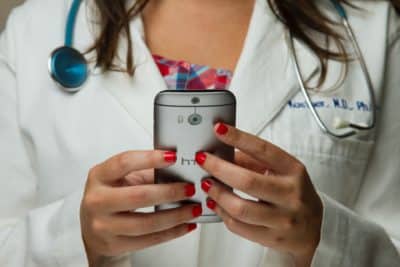Technology changes rapidly, and as it does, it impacts almost every person and sector in the world. One example of how technological innovations of the past decade have had a considerable impact in the healthcare industry. Healthcare in the United States has changed drastically in a short period of time, in large part due to technology.
Dr. Randall Gibb is a Gynecologic Oncologist based in Billings, Montana, who has seen firsthand the fantastic changes to the healthcare community brought on by technology. With over 25 years of experience in the healthcare sector, Dr. Randall Gibb is the perfect person to provide his insight into how technology has assisted the healthcare community.
IMAGE: UNSPLASH
Telemedicine
One of the most recent technological innovations in healthcare has been the emergence of telemedicine. Telemedicine, or telehealth, makes it possible for a patient to contact their doctor from any location so long as they have a smartphone or other device. Necessarily, they can get a hold of their doctor through their device and discuss any health concerns they may have over video conference.
This makes it easier than ever before for patients to get the medical help they need, shares Dr. Randall Gibb. People don’t have to leave their homes, they don’t have to wait in line, and in some cases, they can speak to a doctor at times outside of business hours. While telemedicine is not a solution 100 percent of the time, it is undoubtedly sufficient for less serious health issues.
Convenience And Price
Approximately 45 percent of people under the age of 30 in the United States does not have one doctor they visit regularly. Instead, people tend to see different doctors and often do not do so as frequently as they should. This is where telehealth comes in.
For many, they feel they just don’t have the time to visit a doctor’s office in person. Telemedicine eliminates this problem, making it extremely convenient to check in with a medical professional because you can do so from your home or even from your office at work.
Another issue many Americans face is not being able to afford to go to the doctor. While the cost of a virtual telehealth appointment varies based on your insurance provider, many people have claimed that an e-appointment is half the cost of a regular, in-person appointment.
Thus, telehealth has also made visiting the doctor more affordable, shares Dr. Randall Gibb. The result of these two significant benefits of telehealth is that people are seeing a doctor for shorter visits but also more frequently than ever before.
Typically, people see a doctor once a year or once every two years. Virtual medical care, made possible because of technology, has changed this, making check-ups a more frequent occurrence. This only serves the community better, as it keeps people healthier.
Electronic Medical Records
One of the ways that telemedicine is able to function as well as it does is due to the digitization of medical records, claims Dr. Randall Gibb. Given that the idea of the family doctor is no longer the norm and people have different doctors throughout their lives, it is essential that a person’s medical history is easily accessible. Electronic medical records do just that.
As the name suggests, electronic medical records, or electronic health records (EHRs), are digital summaries of a patient’s medical records. Information on these records could include lab reports, diagnoses, prescriptions, surgeries, allergies/intolerances, or details about hospital stays.
Essentially, they provide an overview of a patient’s health, which is necessary for doctors to be able to do the best job they can in assessing their patient. It is especially important if a patient is unconscious and cannot provide any of this information themselves.
In the past, hospitals, clinics, and private doctor’s offices would have to devote time and money to physically sending these documents between each other. Now, they can easily be shared between labs, specialists, and hospitals at the click of a button.
Dr. Randall Gibb Looks To The Future
It has been explained how technology has already impacted the healthcare industry in positive ways. With even more technological advancements arising every day, these changes to the healthcare industry will continue. Dr. Randall Gibb says for evidence of this, all we have to do is look at the newest advancements when it comes to the novel coronavirus every day. Coronavirus was first reported on in late December 2019.
Nearly six months later, there are several companies already testing vaccines, technology is being used to track and predict outbreaks and peaks, and many tests are being completed to discover more about the virus. For past pandemics in the history of the world, we didn’t have the technology we do now. This pandemic is putting technological advancements in the healthcare industry to the test.
If you are interested in even more technology-related articles and information from us here at Bit Rebels, then we have a lot to choose from.


COMMENTS